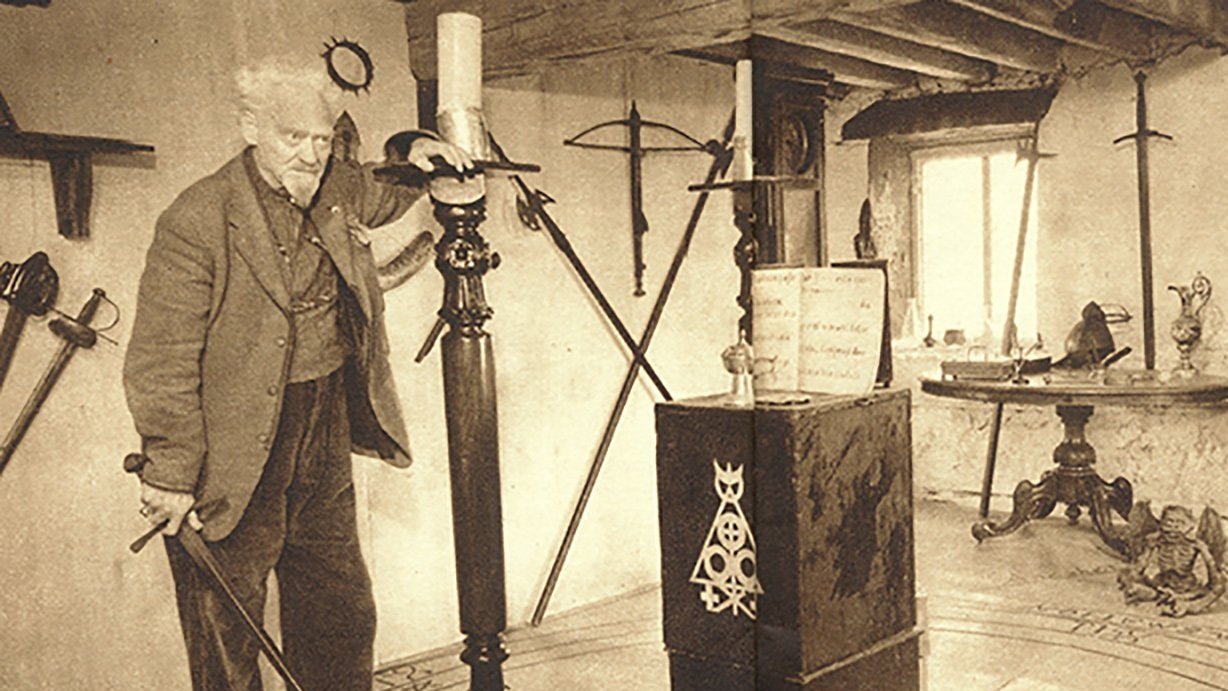
About Gardnerian Wicca
An Initiatory Pagan Priesthood
Until the twentieth century, it was illegal to call oneself a witch in the United Kingdom. An old law—the Witchcraft Act of 1734—remained on the books and made witchcraft a crime punishable by a prison sentence and a fine. By 1951, thanks to the bemused enlightenment of a public who understood that there was no such thing as witchcraft, the law was largely considered obsolete. It was repealed and replaced with the Fraudulent Mediums Act, which did not criminalize witchcraft itself but rather made it illegal to defraud people of money by claiming to have magical powers.
At this point, a retired British civil servant named Gerald Gardner came into the public eye and announced that he was a witch.
Gardner claimed to have been initiated into a surviving pre-Christian witch cult, which was the indigenous religion of the British Isles and had gone underground with the arrival of Christianity, surviving in secret up until the present day. We now know that this is simply not true; our best historical evidence suggests that Gardner was initiated into a group, but that it was started sometime in the 1920s or 1930s. Nonetheless, Gardner’s claims seized the popular imagination. Although the idea of an ancient surviving witch cult is outlandish to us today, it seemed much more plausible in the 1950s (and indeed, Gardner himself appears to have been sincere in his claims). Scholarly works like Margaret Murray’s The Witch-Cult in Western Europe had already advanced the hypothesis that witchcraft had been an ancient pagan religion, and books like Charles Godfrey Leland’s Aradia, the Gospel of the Witches suggested that pagan witchcraft might have survived up to the present day. The public was primed to believe in the old religion of witchcraft—and so Wicca was born.
The witch cult as Gardner introduced it to the world was an initiatory mystery religion. This, in essence, meant two basic things: first, that someone could only join the religion by being initiated by someone who already belonged to it, and second, that initiates took an oath not to discuss certain elements of the religion with outsiders. Gardner’s witchcraft was organized into autonomous covens of a dozen people or less, which were led by the the partnership of a High Priestess and a High Priest. These covens celebrated the cyclicality of nature, focusing on things like the phases of the moon, the changing of the seasons, and the mysteries of human life and death. The witch cult had two patron deities: a lunar Mother Goddess and her consort, a Horned God of the hunt. As witches, they engaged in spellcasting and magic to influence the world around them.
Over time, demand for witchcraft began to exceed supply. Traditional Wiccan covens were small, few in number, and geographically sparse; more people were interested in Wicca than had access to it, especially on the American continent. As a consequence, people began developing their own magical and religious practices and calling those practices Wiccan. Through the second half of the twentieth century, the word “Wicca” came to mean many things to many people.
Nevertheless, Gardner’s witch cult still survives today. Gardnerian Wicca is the Wicca that Gerald Gardner first introduced to the world. It is organized into small, autonomous covens that trace initiatory lineage back to Gardner. These covens honor the Gods, work magic, observe seasonal celebrations, and explore the mysteries of life and death, although each coven does so in its own way.